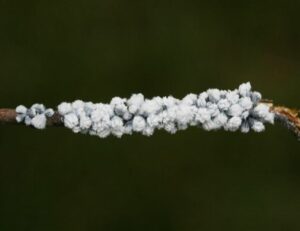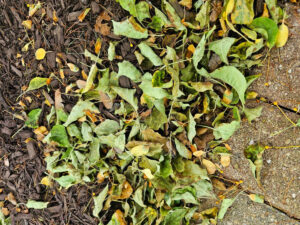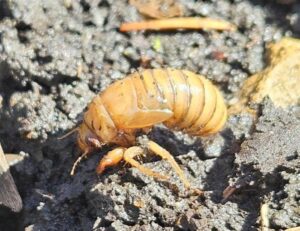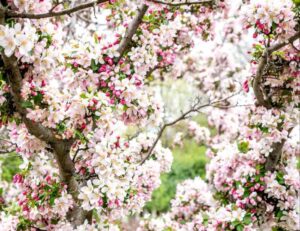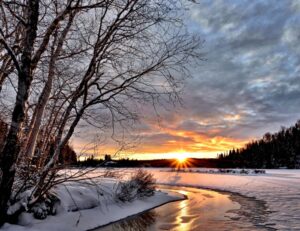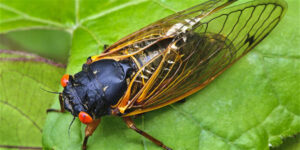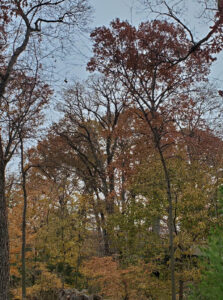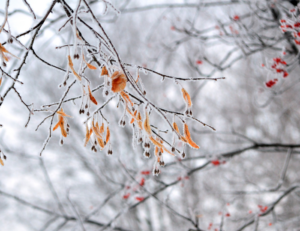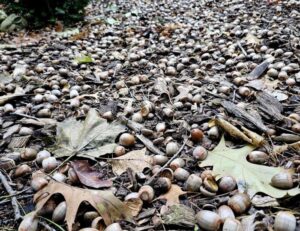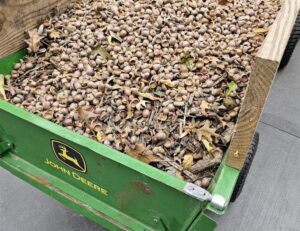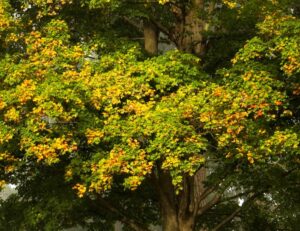WE THOUGHT YOU MIGHT FIND THE PHOTOS INTERESTING…
FOUR TREES, FOUR STAGES OF DECLINE

This first photo is of a tree beginning to show signs of environmental stress. which is evident due to the dying limbs protruding out of the top of the tree. That type of dieback is never a natural occurrence.
It is important to realize when a tree is giving us an early warning sign such as this, it is in trouble and needs intervention.
This tree is very much treatable at this stage if we only recognize what is happening and properly deal with the issue. If you pay attention as you drive around, you will see all different varieties of trees in all different stages of weather-related stress both from overly wet conditions from 2008 through 2019 and more recently from 4 years of drought.

This is stage 2 decline.
You’ll notice that the tree is exhibiting a little more dieback resulting in more interior thinness.
This is still very treatable if only we notice the warning signs.

At this point, it is more questionable as to whether this tree can be saved. If a potential client called us to inspect this tree we would inform them that the odds of saving it are at about 50%. We would also advise that a transformation won’t happen overnight because it took a period of years for the tree to get into this condition and it will take a period of years for it to recover. The client will have to weigh out the aesthetic importance of the tree versus the expense of attempting to save it.
Many of our clients have already personally experienced the ‘tree miracles’ Tree Green has produced which has resulted in many amazing ‘before and after’ photos. The only thing we can promise with almost absolute certainty is that trees in these declining conditions will continue to decline and won’t survive without intervention.

THE OWNER OF THIS TREE WAITED TOO LONG…
Trees in this condition are 100% un-treatable. The only recommendation that we can make at this point is the phone number of a quality tree removal company.
We tell folks all the time that it’s best to stay ahead of the curve. Don’t let your trees get into the condition shown in any of these four photos in the first place. We improve tree health through traditional High-Pressure Root Fertilization administered at the drip line of your trees root system. If trees are showing stress as seen in the first three (3) photos then we perform our Stress Recovery Basal Root Drenching with a mix of 22 minerals, nutrients, and amino acids all highly beneficial to overall tree health and recovery.

On a separate note, this tree was tied with a black rope probably about 5 to 8 years ago in an effort to straighten it. Well, the tree is as straight as an arrow now, but it is also 100% dead. The tree fought to stay alive which is evident from the swelling above the rope, but it obviously cut into the vascular system over time and killed the tree.
If you need to straighten a tree, you should run the rope through a rubber tube and then stake it down but never for more than one growing season. Staking longer than that gives the tree a false sense of support and it’s root system will not develop properly.

Just a ‘reminder’ for next Spring…
Notice the damage on the trunk of the tree pictured on the left!
Never pile mulch up against the base of any tree or shrub. This tree ended up dying. The reason? Piling mulch or soil up against the bark traps moisture. The bark gets soft and spongy allowing insects to burrow into it, damaging the trees vascular system. Once the sap flow is obstructed enough, the tree dies. It may take 2 years or 20 years but eventually, this practice more often than not kills trees.



